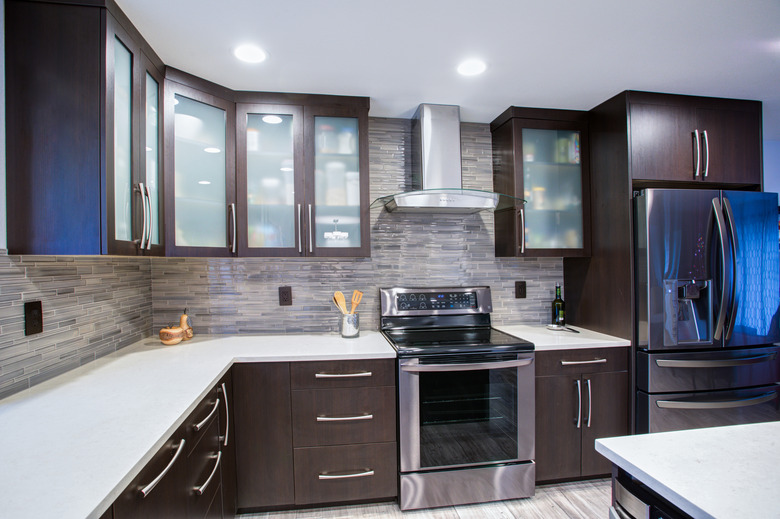I Want To Move My Refrigerator To Another Wall
Moving a refrigerator to another wall may drastically change the look of your kitchen since this appliance takes up a large amount of space. Bear in mind, the cost to move the refrigerator in your kitchen may be more than you anticipate. It's not as simple as relocating a lamp, partly because of its size and partly because the kitchen's design and workflow revolve around it.
Start With Power
Start With Power
Refrigerators require electricity to run; therefore, examine the wall where you want to set it for a proper electrical outlet. If the wall currently has no cabinetry, built-in shelving or large furniture to relocate, positioning the fridge where it has access to electricity and provides practical, day-to-day access should be straightforward.
If there is no outlet, hire an electrician to install one as extension cords are unsightly and potentially dangerous. If the best location for your refrigerator is currently obstructed by furniture, cabinetry or built-ins, you'll need to plan and budget for removing or repositioning them.
Providing a Water Line
Providing a Water Line
If your refrigerator has a water dispenser or an ice maker, an accessible water line is imperative when moving the unit. If there is already plumbing on the wall where you'd like to place the fridge, it can be repurposed for the refrigerator or you can purchase a water line installation kit and slice into the existing lines.
You might also need to hire a professional to install the water line once you decide where you wish to relocate the appliance. The cost of moving kitchen plumbing can be substantial, so get several quotes before proceeding. It might make sense instead to do a full kitchen remodel, moving the refrigerator as part of the overall process, rather than upgrading piecemeal.
Obstructions and Door Opening
Obstructions and Door Opening
Refrigerators come with many types of door openings. Whether you have a top or bottom freezer, side-by-side or a French door refrigerator, measure the clearance space of the doors before moving the appliance. Verify that if another appliance, such as a dishwasher or stove, is near the refrigerator that both appliance doors may be opened at the same time; otherwise the move may cause difficulty for more than one person to be in the kitchen working at the same time.
Also, ensure that the refrigerator doors do not block doorways or interfere with other pathways. An island or another object may be near the refrigerator and prevent the doors from opening fully.
Moving Cabinets to Fit the Refrigerator
Moving Cabinets to Fit the Refrigerator
Measure the depth, height and width of your refrigerator with a measuring tape and verify that your chosen new space doesn't have overhead cabinets that make the area too short for the refrigerator. The correct depth ensures that the refrigerator does not jut out beyond the counter space on either side of the appliance. Allow for 6 inches of space behind the refrigerator and 2 inches overhead for proper ventilation and to increase the life or your appliance.
Alternatively, if your refrigerator is currently nestled into a bank of cabinetry, it might make sense to move the cabinets as well. First verify that there's space on your chosen wall for the surrounding cabinetry, without impeding other doors and drawers or affecting the kitchen's flow. Carefully un-mount the cabinets from their existing wall, including any mounting rails or other hardware.
Reinstall on the new wall following the manufacturer's directions, ensuring that they are level and plumb in their new location, before sliding the fridge into place. You will likely need to paint or patch the wall at the original location, unless you're covering it with new cabinetry.
